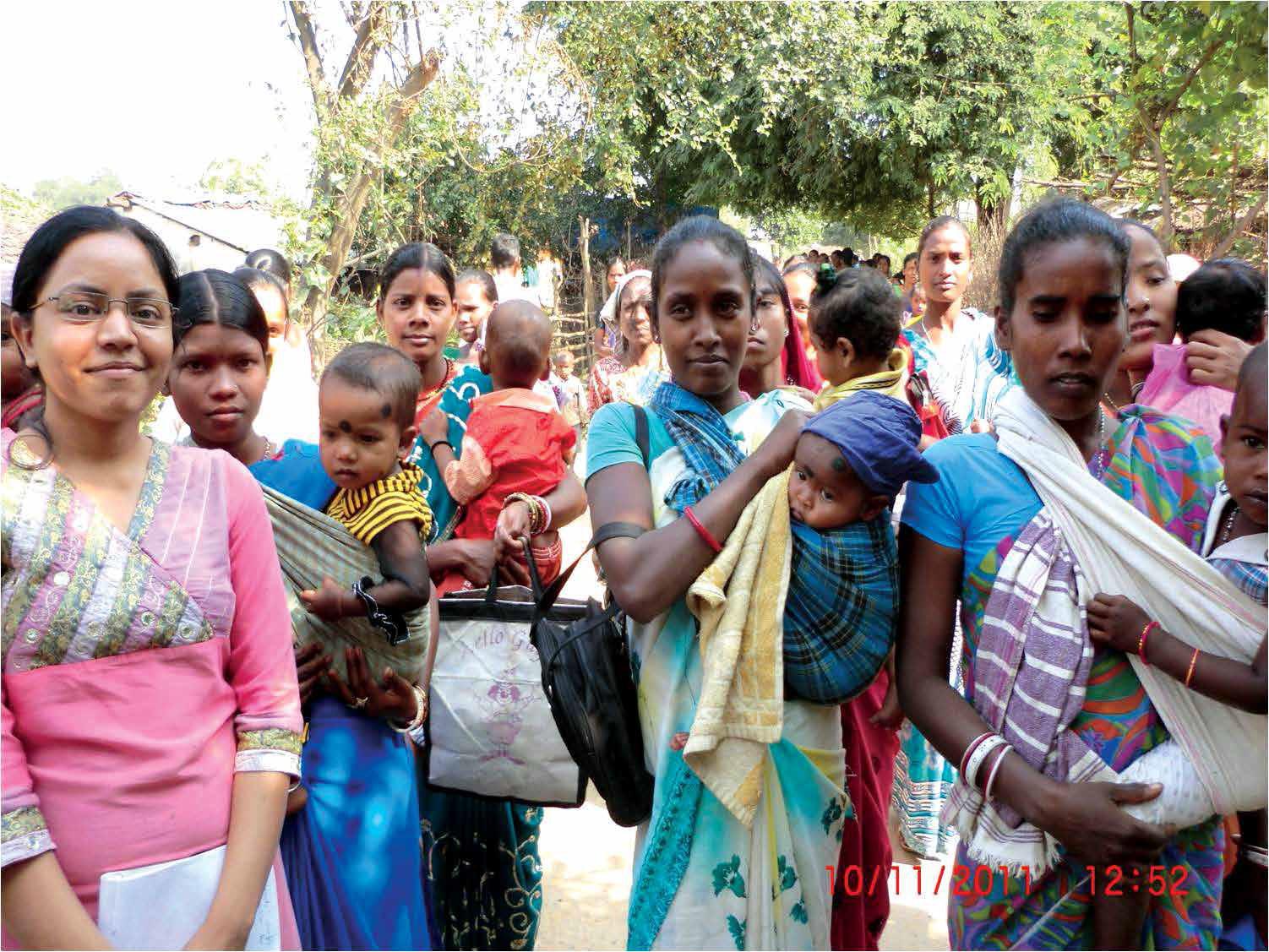Researcher of the Month: Dr Kelly Baker

Mothers and children with a community health worker
This month, SHARE published a new paper examining how WASH risk factors for reproductive tract infection (RTI) symptoms vary over the life course for women and girls in rural India. The study's PI and first author, Dr Kelly Baker from the University of Iowa, tells us how she came to work in this field and what the findings from this study mean for future research.
What is your background?
My graduate training is in microbiology and immunology. As a postdoctoral fellow, I trained in global health epidemiology with Mike Levine, PI of the Global Enteric Multicenter Study. I am now an Assistant Professor at the University of Iowa, and have expanded my program to focus on how WASH affects the health of women and their offspring beyond diarrheal diseases.
How did this study come about?
SHARE put out a call for proposals on sanitation and women in 2011, and after talking over ideas with several colleagues at Emory University and LSHTM, we reached out to the Asian Institute of Public Health (AIPH) to ask if they would like to collaborate. AIPH had ongoing clinical studies in maternal and neonatal health, and that clinical network offered a lot of flexibility in using both community and clinic-based study designs to investigate how WASH affected women’s health. We contributed expertise in WASH and gender topics, while they advised on how to implement the studies.
What were the main findings from your study?
One main finding of the study was that women’s experience of WASH is dynamic across life course stages, from adolescence to matriarchy. It definitely highlights the importance of accounting for contextual aspects of women’s life stage when documenting or measuring the conditions women experience. We also found that women with access to a latrine and to a nearby bathing location were less likely to report experiencing symptoms of a reproductive tract infection. This adds adolescent girls’ and women’s reproductive health to the scope of health issues related to water and sanitation access. The findings also provide clues about potential causal mechanisms in one of our other studies that found lack of water and sanitation access increased women’s risk of preterm birth and low infant birth weight in Indian women. RTIs are known risk factors for preterm birth, and the fact that women with inadequate water and sanitation are more likely to experience RTI symptoms and preterm birth suggests that RTIs may an important intermediate outcome in the WASH and preterm birth pathway.
Was there anything surprising or unexpected you found from the study?
I was definitely surprised by the counterintuitive association between handwashing and bathing with soap and RTI symptoms. Soap is obviously important for maintaining vaginal hygiene, but some studies have reported that vaginal and intravaginal bathing with soap is associated with bacterial vaginosis – presumably through disturbance of the vaginal microbiome. As we stated in the paper, these associations could also be an artefact of study design. We can’t resolve whether handwashing with soap is a cause or an outcome of experiencing RTI symptoms in this study, but given the general uncertainty about soap as a risk factor across multiple studies, it should definitely be investigated in future studies. The most interesting finding to me was that pregnant women were more likely to report improved access to drinking water sources, latrines, bathing frequency, etc, even compared to newly married, non-pregnant women of similar age. This suggests that WASH accessibility improves during pregnancy, at least for a subset of women.
What further research is still needed on this topic?
We really have very poor statistics on the true prevalence of RTI diseases like bacterial vaginosis, which seems like a critical knowledge gap in terms of prioritizing WASH and women’s health interventions. We need more studies on RTIs that use mobile clinic approaches to take rigorous disease diagnostic tools to the women who are least likely to engage in health care utilization and thus clinical surveillance studies.
It also would be nice to see greater inclusion of data collection on day-to-day (beyond menstruation) bodily and genital hygiene behaviours in WASH studies to help us better understand the full range of ways in which improvements in WASH access affect women. Similarly, there is a great need for more research on the social and environmental causes of preterm birth and low birth weight in countries like India where preterm birth rates are high and rising annually. My research group has just completed a separate study that found water-related domestic labour and sanitation-related social harassment of girls and women increases the risk of preterm and low birth weight outcomes in India (stay tuned for upcoming articles!). So, WASH may also be affecting pregnancy outcomes through stress pathways. We need more studies that examine the relative importance of RTI and stress in maternal health in India and elsewhere to understand how to prevent preterm and low birth weight outcomes. If WASH accessibility is a major determinant of these maternal conditions, this needs to be accounted for in monitoring programs (e.g. Global Burden of Disease) and considered when prioritizing maternal and child health interventions.
